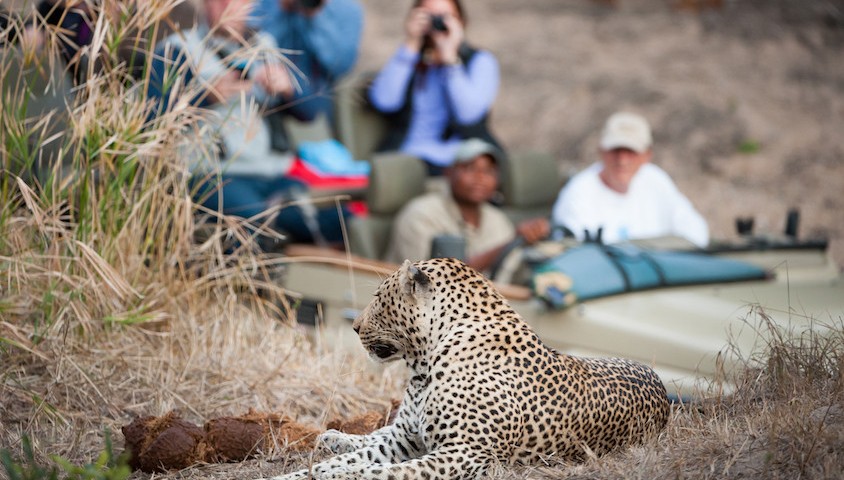Recently released research co-authored by Griffith University‘s professor Ralf Buckley is the first to attempt to quantify the impacts of ecotourism outfits on threatened species.
The study, published in PLOS ONE, demonstrated an array of different outcomes for the study species according to the level of ecotourism modelled, with some species responding better than others.
Of the nine species examined in the study, seven largely benefited from ecotourism, whereas the orangutan saw mixed results and the New Zealand sealion was predicted to decline in presence of ecotourism.
Speaking to the ABC, Buckley said these varied results explain why there’s been “so much research on ecotourism carried out over the past 20 or 30 years without reaching any conclusion”.
“There is no universal pattern – it depends on the biology of the species and the details of the ecotourism operation.”

Graphs of population trajectories for the nine study species under four different levels of ecotourism. Click to enlarge.
Population Viability and Ecotourism
The study’s methodology involved calculating changes in the expected time before a given species would become extinct using population viability analysis (PVA), which require detailed data about existing populations in order to be accurate.
As these type of PVAs have been refined over the years, more specific population data is required, and so the research team were limited in the number of species they could study. That meant the number of study species dropped from 133 to just nine once the necessary exclusions had been taken into account.
The PVAs were then used to calculate the population trajectories of each of the nine species under ‘nil’, ‘low’, ‘medium’ and ‘high’ levels of ecotourism, which provided the overall trend for each case.
“There are several factors that can influence the reliability of these predictions,” Buckley explained in a recent interview with Wild. “In practice, especially with small populations of rare species, events can occur that disrupt the averages we input into our PVAs.
“Also, to convert ecotourism effects to population parameters, we estimate the percentage change in the parameters under differing levels of ecotourism from previously published literature.”
Because these changes are estimated, the study included sensitivity analyses, whereby the modelling is run with higher and lower estimates in order to gain an understanding of how robust they were.
“The bottom line is that we can be confident in the overall patterns, but less so in the detailed numbers,” Buckley said.
In the case of the orangutan, the positive impacts of ecotourism operations were found to be outweighed by the significant threat posed by loggers through deforestation. In this model, a net positive effect was only gleaned once the scale of ecotourism reached a tipping point that outweighed the logging industry.
By comparison, all levels of ecotourism were found to be bad for New Zealand sealions, as the presence of humans disturbs the ability of mothers to feed their pups. This effect, combined with the impacts of collapsing fisheries to significantly reduce the sealion population over time.
Supporting Ecotourism
Overall, the research demonstrates the usefulness of ecotourism as a viable tool for conservation but also that it shouldn’t be accepted as efficacious in every instance.
“What we’ve done is to construct and test a new tool,” Buckley said. “Who funds it depends on who wants to use it – and who wants to know the answers.”
Private reserves funded by ecotourism and individual operators all have a clear interest in the use of such a tool, however not all of them will necessarily benefit from the results. On the other hand, the independently funded research organisations that are less likely to have a bias towards supporting ecotourism operations tend to have less reliable funding to allocate towards such research.
“Currently, some national parks agencies and private ecotourism enterprises are funding translocations of rare animals from one country to another in order to safeguard those individuals from poaching.
“These projects are often multi-million-dollar investments, often in excess of $10 million to fund. Now there’s a much less expensive option that provides a more accurate calculation of outcomes prior to going ahead with an enormous translocation operation.”
However, until these analyses have been carried out across all ecotourism initiatives, tourists will have to rely on their own abilities to research and discern which operators are worth investing in.
“There are good operators and there are poor operators that mimic the good ones, but it’s hard to pick the mimics,” advised Buckley. “However, there are plenty of things to do to build up an overall picture.”
“Beyond reading about conservation projects on the operators website and other marketing materials, check to see if they’ve won any awards or have received specialist certifications in ecotourism and conservation. Conversely, search online to see if the operators has ever been cited for unethical practices, been involved in lawsuits and, if you want to go further, research the company’s board of directors and their affiliated businesses if it’s a public company.”
Otherwise, Buckley counseled, it’s still worth seeking advice from independent publications, specialist travel agents and non-profit conservation groups with experience in the region you intend to visit.


